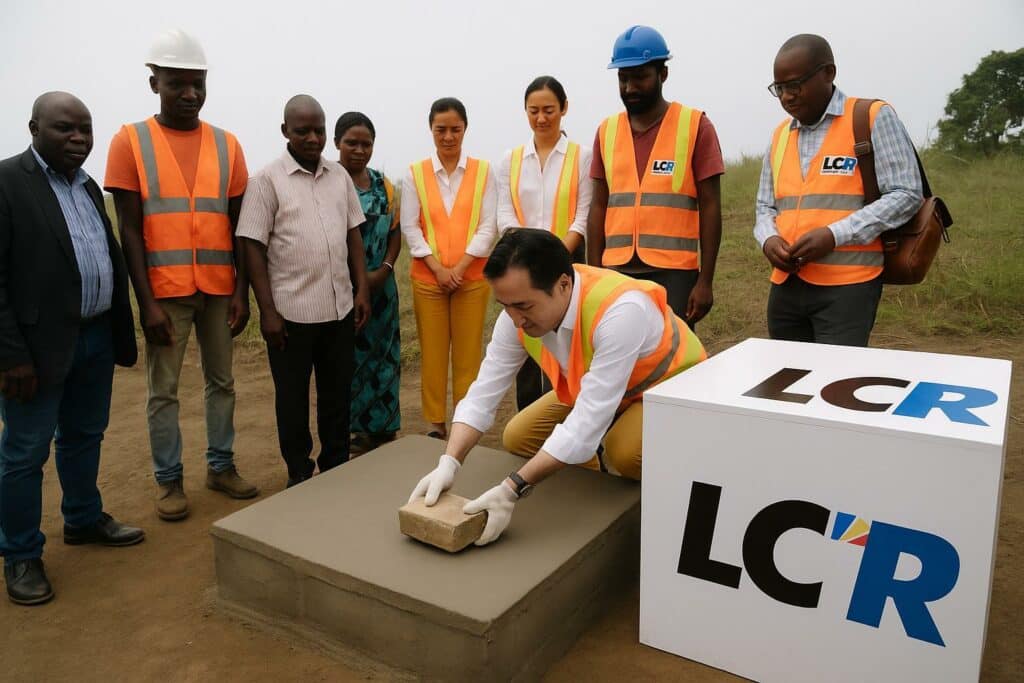Corporate social responsibility along RN1
In a discreet yet decisive move, La Congolaise des Routes (LCR) has chosen the classroom as the latest extension of its concession over the nation’s principal trunk road, the Route nationale nº1. On 15 October a delegation led by Deputy Director-General Jacques Almaless travelled deep into Pool Department to present two neighbouring communities—Boulankio and Ngatoko—with an agenda that merges infrastructure economics and social purpose. By financing a borehole, repairing a feeder road and distributing school kits, the company demonstrates how corporate social responsibility can be tethered to a strategic transport artery without drifting into public-relations tokenism.
The RN1 is more than asphalt: it is the territorial backbone that links Brazzaville to the port of Pointe-Noire, channelling trade, services and, increasingly, expectations. LCR’s concession contract already entails strict maintenance standards, yet the firm is voluntarily broadening its mandate to include amenities that the state alone ne peut raisonnablement porter. The declared objective, as Almaless phrased it in Boulankio, is to “improve living and learning conditions in the schools bordering the RN1,” a mission that conveniently aligns the company’s logistical expertise with local development priorities.
Potable water as a catalyst for learning
Boulankio’s primary school, perched in a zone where potable water is a daily uncertainty, will soon host a 200-metre-deep borehole feeding an elevated storage tank. The depth is not arbitrary; geological surveys commissioned by LCR determined that the first reliable aquifer lies well below the lateritic crust. Drilling to that level demands heavier rigs, higher energy expenditure and tighter safety protocols—investments that a rural community could scarcely contemplate alone.
Beyond the technical bravado, the implications for pedagogy are immediate. A stable water point secures the sanitation block, liberates teaching hours otherwise lost to fetching water and reduces exposure to water-borne infections that often keep pupils at home. Village chief Jean Claude Pombi captured local sentiment succinctly when he hailed “un véritable soulagement” for both children and parents. The scheduled commissioning—within six weeks—suggests that the contractor has locked in suppliers and labour, mitigating the risk of construction overruns that frequently plague rural works.
Safeguarding access to Ngatoko
Sixty kilometres closer to Brazzaville, the school at Ngatoko confronts a different bottleneck: deteriorated physical access. Here LCR is restoring a 400-metre stretch of laterite whose ruts had become impassable at the first rains. The rehabilitation complements roof repairs, classroom repainting and sanitation upgrades, forming a compact yet coherent package that headmaster Fidèle Mayela qualifies as “providential.”
Operationally, the roadwork has a double dividend. It secures the logistical corridor for school supplies—textbooks today, examination papers tomorrow—and it anchors the wider village economy by shortening transit times to the capital. In Pool, where topography and past unrest have long complicated mobility, even a few hundred metres of sound roadway can shift the calculus of attendance rates and household income.
From asphalt to awareness: road safety lessons
Infrastructure, LCR insists, is only half the equation. The visiting engineers transformed themselves into animateurs, delivering interactive sessions on speed limits, pedestrian vigilance and the meaning of the RN1’s pictograms. Almaless reminded pupils that each sign is “a code that speaks to every user—driver or child” and urged guardians to protect the panels from theft or vandalism.
Such awareness campaigns anchor a preventive culture at the very spot where risk is most acute. For the 85 pupils of Boulankio and the 130 of Ngatoko, the road is both gateway and hazard. Embedding safety reflexes early not only preserves lives but also preserves the company’s own asset; fewer accidents translate into lighter maintenance bills and steadier traffic flows.
A measured ripple effect on rural education
The distribution of notebooks, pens and backpacks may appear modest beside drilling rigs and graders, yet it completes the social return on infrastructure by tackling another chronic barrier: the hidden cost of schooling. Parents long accustomed to rationing supplies can now channel scarce household revenues to nutrition or healthcare, reinforcing the virtuous circle seeded by the borehole and the feeder road.
Although the interventions remain punctual, their design hints at scalability. By targeting nodes where its highway meets public-service deficits, LCR is effectively piloting a template that other concessionaires—or even state agencies—could replicate along the national network. Importantly, the initiative dovetails with government ambitions to raise rural enrolment rates and to stabilise Pool after years of volatility, without encroaching on the public sector’s sovereign prerogatives.
Whether the ripple will widen depends on sustained maintenance and on a collaborative ethos between the company, local authorities and the Ministry of Primary Education. For now, Boulankio’s children wait for the first gush of clean water, Ngatoko’s teachers listen for the rumble of graders, and both communities glimpse a future where the RN1 is as much a conduit of opportunity as of traffic.

